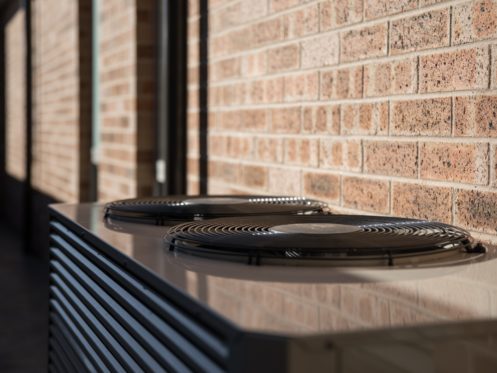A typical HVAC system lasts from 10 to 20 years, with the recommendation of replacing it around 12-15 years. Although, how long do HVAC systems last depends on a few things depends on a few things, including:
- If your home properly sealed and insulated
- Routine HVAC tune-ups and maintenance
- Set temperature preferences
- Local climate conditions
So how to tell when it’s time to replace? Here are 6 indicators to look for.
Age
The first sign is simple, it’s the age of your system. Many modern advancements made in recent years have increased efficiency in HVAC energy usage. With that in mind, homeowners with HVAC systems that are older than 10 years should be scouting out a replacement. Not only will newer models help save money on monthly energy bills, but also in part repairs and maintenance.
Increasing Repair Costs
In addition to needing repairs more often, manufacturers can discontinue certain mechanical parts your system still uses. So not being able to get parts you need, is another telltale sign that it’s time to replace. Instead of continuing to purchase parts and invest time, think about using those resources on a new system. Especially if the repair costs more than half the cost of a new system.
Reduced Efficiency
Regardless of the effects of seasonal changes, the same month’s energy bills are relatively similar every year. If this is not the case, it could be time for a replacement. Like every mechanical unit, efficiency tends to decline due to aging parts. Especially if homeowners are ignoring regular maintenance and checkups. However, regular maintenance (such as cleaning HVAC coils) can only keep your system running longer to a point. Depending on your current system, an upgrade to replace your system can cut down on your energy bills upto 20%.
Fluctuating or Improper Temperature Readings
There can be several reasons for temperature inconsistencies with the most common being an inefficient system or insulation/ductwork issues. These areas can lose their effectiveness over time. Replacing insulation will help reduce the transfer of temperatures from your interior and exterior walls. In addition, it could potentially find hidden leaks that could mean a bigger problem. Updating or resealing the ductwork can help evenly distribute cold or hot air throughout your home. Furthermore, along with the inconsistent temperatures, it also creates increased energy consumption as the system has to work harder.
Poor Air Quality
Similarly, inefficient systems create a home environment with poor air quality. HVAC systems are made to reduce the amount of humidity and dust from the air. So if you notice high levels of humidity or dust this could mean your system isn’t running properly anymore. From leaky ductwork pulling in dust from the attic to simply your unit isn’t efficient enough to remove it any more. Furthermore, leaky ductwork can lead to an excessive increase/decrease in humidity levels during the summer and winter months.
HVAC Short Cycling
This is the term used for HVAC systems when they turn off and on too frequently due to an issue. This leads to shortened HVAC lifespans from the stress of too many starts and stops. On top of that, your energy consumption and monthly bills will increase as it’s running more often than it should. This is often a problem caused by failing to maintain the HVAC system with regular maintenance checkups.
HVAC Replacement Services with Satterlee
If your HVAC system is having these kinds of issues, it will be well worth looking into replacement models. Furthermore, did you know improper installation can shorten the new system’s lifespan and efficiency up to 30%? In order to get the best performance, your system needs highly trained technicians to help your system run strong for years to come. If you’re undecided about making another repair or getting a replacement, reach out to one of our technicians! We can help guide you through your options and help you know what is best for your situation.


